Are you curious about what are dance floors made of and how to choose the right one for your event or venue? At ten-dance.com, we delve into the various materials used in constructing dance floors, explaining their pros, cons, and suitability for different dance styles and events. This guide ensures you select a surface that enhances both the aesthetic appeal and the functional performance of your dance space, with a focus on safety, durability, and the overall dancing experience.
Let’s explore the world of dance floor materials and discover the perfect foundation for your next dance event, discussing everything from traditional wood to modern LED options, and we’ll cover the latest innovations in dance floor technology.
1. Understanding the Essentials of Dance Floor Materials
What qualities should you look for when selecting dance floor materials?
The ideal dance floor material must balance several critical characteristics, including slip resistance, shock absorption, durability, and aesthetic appeal. Slip resistance is vital to prevent falls and injuries, while sufficient shock absorption protects dancers’ joints during high-impact moves. Durability ensures the floor withstands frequent use and remains in excellent condition over time. The material’s appearance should complement the space and enhance the overall ambiance. Considering these factors will lead to a safer, more enjoyable, and visually pleasing dance environment.
1.1 Why is Choosing the Right Dance Floor Material Important?
Why is selecting the correct dance floor material so critical for dancers and events?
Choosing the right dance floor material significantly impacts dancers’ safety, performance, and enjoyment. A properly selected floor reduces the risk of injuries by providing appropriate grip and cushioning. It also enhances performance by allowing dancers to move freely and confidently. For events, the right dance floor material can elevate the aesthetic and functional aspects, making the event more memorable and successful. The dance floor acts as a stage for expression, impacting the quality of every performance and the comfort of every dancer.
1.2 How Do Different Dance Styles Impact Dance Floor Selection?
How does the style of dance influence your choice of dance floor material?
Different dance styles place varying demands on dance floors. For example, ballet requires a smooth, even surface like sprung wood to support precise movements and reduce the risk of injury from repetitive jumps and landings. Tap dancing, on the other hand, needs a hard, durable surface like hardwood to produce clear, resonant sounds. Hip-hop dancers may prefer a surface with a bit more grip, such as vinyl, to facilitate quick stops and directional changes. Considering the primary dance styles performed on the floor is crucial to selecting a material that optimizes performance and safety.
2. Traditional Dance Floor Materials: Timeless Choices
What are the classic materials used in dance floor construction?
Traditional dance floors often feature materials like hardwood, plywood, and occasionally even concrete, each offering unique characteristics and benefits for dancers. Hardwood is celebrated for its durability and aesthetic appeal, making it a favorite in ballrooms and studios. Plywood provides a more economical alternative, commonly used as a subfloor for sprung dance floors. Concrete, while less common, can be found in some industrial or outdoor settings. These materials have been the foundation of dance for generations, each bringing a unique feel and functionality to the dance experience.
2.1 Hardwood Dance Floors: Elegance and Durability
Why is hardwood a popular choice for dance floors, and what are its benefits?
Hardwood dance floors are prized for their natural beauty, durability, and resilience, making them a popular choice for dance studios, ballrooms, and performance spaces. Hardwood offers a consistent surface that allows dancers to move freely while providing sufficient grip to prevent slips. Its durability ensures it can withstand heavy use over many years, and its classic aesthetic enhances the ambiance of any space. Properly maintained hardwood floors offer an ideal balance of performance and elegance.
2.2 Sprung Wood Dance Floors: Comfort and Injury Prevention
What is a sprung floor, and how does it reduce the risk of injury for dancers?
Sprung wood floors are designed with a subfloor that absorbs impact, reducing stress on dancers’ joints and minimizing the risk of injuries. The construction typically involves layers of resilient material, such as foam or rubber, beneath the hardwood surface. This design allows the floor to flex and cushion landings, making it ideal for high-impact dance styles like ballet and contemporary. Sprung floors are an investment in dancers’ long-term health and well-being, providing a comfortable and safe dancing environment. According to research from the American Dance Therapy Association, in July 2025, sprung wood dance floors provide dancers with unparalleled comfort and a reduced risk of long-term injury.
2.3 Plywood Dance Floors: An Economical Option
When might plywood be a suitable choice for a dance floor?
Plywood dance floors offer an economical and versatile solution for various dance settings, particularly as a subfloor in sprung dance floor systems. While not as durable or aesthetically pleasing as hardwood, plywood provides a stable and even base for dance surfaces. It is also easy to install and can be painted or covered with other materials to enhance its appearance. Plywood is a practical option for temporary dance spaces, home studios, or situations where budget is a primary concern.
3. Modern Dance Floor Materials: Innovations in Performance
What innovative materials are transforming dance floor design and functionality?
Modern dance floor materials include vinyl, acrylic, LED panels, and glass, each offering unique performance benefits and aesthetic possibilities. Vinyl provides a versatile and cost-effective option with excellent slip resistance and ease of maintenance. Acrylic and glass offer transparent and durable surfaces, ideal for LED lighting effects. LED panels themselves create dynamic and interactive dance floors with customizable visuals. These modern materials expand the boundaries of dance floor design, offering new opportunities for creativity and enhanced performance.
3.1 Vinyl Dance Floors: Versatility and Affordability
What makes vinyl a versatile and affordable option for dance floors?
Vinyl dance floors are known for their versatility, affordability, and ease of maintenance, making them a popular choice for dance studios, schools, and performance spaces. Vinyl provides excellent slip resistance, reducing the risk of falls, and it is available in various colors and styles to suit different aesthetic preferences. Its durability ensures it can withstand heavy use, and its water resistance makes it easy to clean. Vinyl is an ideal option for those seeking a practical and cost-effective dance floor solution.
3.2 Acrylic Dance Floors: Transparency and Visual Appeal
How does acrylic enhance the visual impact of a dance floor?
Acrylic dance floors provide a visually stunning and durable surface that enhances the aesthetic appeal of any dance space. Its transparency allows for creative lighting effects, particularly when combined with LED technology, creating a vibrant and dynamic dance environment. Acrylic is also highly durable, capable of withstanding heavy use and resisting scratches. This combination of visual appeal and durability makes acrylic dance floors a popular choice for nightclubs, events, and performance venues.
3.3 LED Dance Floors: Interactive and Dynamic Surfaces
What are the benefits of using LED panels in dance floor construction?
LED dance floors create an interactive and dynamic surface that enhances the energy and excitement of any event or performance. LED panels can be programmed to display various colors, patterns, and animations, creating a visually stunning and engaging dance experience. They are also highly durable and can withstand heavy foot traffic. LED dance floors are ideal for nightclubs, parties, and other events where creating a memorable and immersive atmosphere is a priority. The TP-873 LED Starlit Dance Floor from ten-dance.com is a great choice.
3.4 Glass Dance Floors: Elegance and Modernity
How does glass contribute to the elegance and modernity of a dance floor?
Glass dance floors bring an element of elegance and modernity to dance spaces, offering a sleek, reflective surface that enhances the overall aesthetic. Toughened glass is strong, durable, and heat-resistant, ensuring dancers’ safety and longevity. Glass can also be combined with LED lighting to create stunning visual effects. Glass dance floors are often found in high-end venues, events, and installations where a sophisticated and contemporary look is desired.
4. Factors to Consider When Choosing Dance Floor Material
What key factors should you consider when selecting the right dance floor material for your needs?
Selecting the right dance floor material involves carefully considering several factors, including the type of dance, the level of use, budget, maintenance requirements, and aesthetic preferences. High-impact dance styles require floors with excellent shock absorption, while tap dancing necessitates hard, durable surfaces. High-traffic areas demand materials that can withstand heavy use and are easy to maintain. Budget constraints may influence the choice between hardwood and vinyl. Ultimately, the ideal dance floor material balances functionality, durability, aesthetics, and cost.
4.1 Durability and Maintenance
How do durability and maintenance requirements influence the choice of dance floor material?
The durability and maintenance requirements of a dance floor material are critical considerations that impact long-term costs and usability. High-traffic areas require durable materials that can withstand heavy use without showing signs of wear and tear. Low-maintenance materials reduce the need for frequent cleaning, polishing, or repairs, saving time and money. Selecting a material that balances durability and ease of maintenance ensures the dance floor remains in excellent condition with minimal effort.
4.2 Slip Resistance and Safety
Why is slip resistance an essential safety feature in dance floor materials?
Slip resistance is a critical safety feature in dance floor materials, as it reduces the risk of falls and injuries. Dancers need a surface that provides adequate grip to perform various movements confidently and safely. Materials with high slip resistance minimize the chance of slips, trips, and falls, creating a safer dance environment for dancers of all levels.
4.3 Shock Absorption and Comfort
How does shock absorption contribute to dancers’ comfort and injury prevention?
Shock absorption is an essential factor in dance floor materials, as it reduces the impact on dancers’ joints and minimizes the risk of injuries. Floors with good shock absorption cushion landings and movements, reducing stress on knees, ankles, and feet. This feature enhances dancers’ comfort, allowing them to perform longer and more comfortably. Shock absorption is particularly important for high-impact dance styles and dancers with joint sensitivities.
4.4 Budget and Installation Costs
How do budget constraints and installation costs impact the selection of dance floor material?
Budget constraints and installation costs are significant factors in selecting dance floor material. Hardwood floors may offer superior performance and aesthetics but can be more expensive than vinyl or plywood. Installation costs also vary depending on the material and the complexity of the installation process. Considering both the initial costs and the long-term maintenance expenses is crucial to making a cost-effective decision.
4.5 Aesthetics and Design
Why are aesthetics and design important considerations when choosing dance floor material?
Aesthetics and design are important considerations in selecting dance floor material, as they contribute to the overall ambiance and visual appeal of the dance space. The floor’s color, texture, and pattern can complement the space’s architecture and enhance the dancers’ experience. Choosing a material that aligns with the desired aesthetic creates a more inviting and inspiring dance environment.
5. Dance Floor Materials for Different Dance Styles
Which dance floor materials are best suited for specific dance styles?
Different dance styles require different dance floor materials to optimize performance and safety. Ballet benefits from sprung wood floors, providing a smooth, even surface with excellent shock absorption. Tap dancing requires a hard, durable surface like hardwood or specialized tap floors to produce clear, resonant sounds. Hip-hop dancers may prefer vinyl floors, offering a balance of grip and flexibility. Considering the specific needs of each dance style ensures the floor enhances rather than hinders performance.
5.1 Ballet: Sprung Wood Floors for Grace and Safety
Why are sprung wood floors the preferred choice for ballet dancers?
Sprung wood floors are the preferred choice for ballet dancers due to their exceptional shock absorption, smooth surface, and support for precise movements. The sprung construction reduces the impact on dancers’ joints, minimizing the risk of injuries from repetitive jumps and landings. The smooth, even surface allows dancers to glide effortlessly across the floor, and the slight give supports balance and control. Sprung wood floors are an investment in ballet dancers’ long-term health and performance.
5.2 Tap Dance: Hardwood for Sound and Durability
What qualities make hardwood ideal for tap dancing?
Hardwood floors are ideal for tap dancing because they provide a hard, durable surface that produces clear, resonant sounds. The hardness of the wood allows tap shoes to create crisp, distinct sounds, enhancing the auditory experience of tap dance. The durability of hardwood ensures the floor can withstand the constant pounding and scraping of tap shoes without showing excessive wear and tear.
5.3 Hip-Hop: Vinyl Floors for Grip and Versatility
Why are vinyl floors a popular choice for hip-hop dance?
Vinyl floors are a popular choice for hip-hop dance because they offer a balance of grip, flexibility, and affordability. The slight grip of vinyl allows dancers to perform quick stops and directional changes without slipping, while the flexibility provides some cushioning for high-impact moves. Vinyl is also relatively inexpensive and easy to maintain, making it a practical choice for hip-hop studios and practice spaces.
5.4 Ballroom Dance: Smooth Hardwood for Gliding Movements
How do smooth hardwood floors enhance the elegance of ballroom dance?
Smooth hardwood floors enhance the elegance of ballroom dance by providing a consistent, low-friction surface that allows dancers to glide effortlessly across the floor. The smooth surface enables dancers to execute precise footwork and fluid movements, and the natural beauty of hardwood adds to the overall ambiance of the ballroom. Hardwood floors are a classic choice for ballroom dance, providing the perfect combination of performance and aesthetics.
6. Installation and Maintenance of Dance Floors
What are the key steps in installing and maintaining different types of dance floors?
Installing and maintaining dance floors involves several key steps that vary depending on the material. Proper subfloor preparation is essential for all types of dance floors, ensuring a level and stable surface. Hardwood floors require professional installation and regular maintenance, including sanding, sealing, and polishing. Vinyl floors are easier to install and maintain, requiring only regular cleaning with mild detergents. Following the manufacturer’s instructions for installation and maintenance is crucial to ensuring the longevity and performance of the dance floor.
6.1 Preparing the Subfloor
Why is proper subfloor preparation crucial for dance floor installation?
Proper subfloor preparation is crucial for dance floor installation, as it provides a level, stable, and clean surface for the dance floor material. An uneven or unstable subfloor can cause the dance floor to shift, buckle, or crack, compromising its performance and safety. Proper subfloor preparation involves leveling the surface, repairing any cracks or imperfections, and cleaning the area thoroughly.
6.2 Installing Hardwood Floors
What are the key steps in installing a hardwood dance floor?
Installing a hardwood dance floor involves several key steps, including acclimating the wood to the environment, laying a moisture barrier, installing the wood planks, and sanding and finishing the surface. Acclimating the wood ensures it adjusts to the humidity and temperature of the space, minimizing the risk of warping or cracking. Laying a moisture barrier protects the wood from moisture damage. The wood planks are then installed using nails, staples, or adhesive. Finally, the surface is sanded and finished to create a smooth, even surface.
6.3 Installing Vinyl Floors
How do you properly install a vinyl dance floor?
Installing a vinyl dance floor is a relatively straightforward process involving cleaning the subfloor, unrolling the vinyl, cutting it to size, and adhering it to the subfloor. The subfloor must be clean, dry, and level to ensure the vinyl adheres properly. The vinyl is unrolled and allowed to relax before cutting it to the dimensions of the room. Adhesive is then applied to the subfloor, and the vinyl is carefully pressed into place, smoothing out any bubbles or wrinkles.
6.4 Cleaning and Maintaining Dance Floors
What are the best practices for cleaning and maintaining different types of dance floors?
Cleaning and maintaining dance floors involves regular sweeping, mopping with appropriate cleaners, and occasional refinishing or repairs. Hardwood floors should be swept regularly to remove dirt and debris, and mopped with a wood cleaner. Vinyl floors can be cleaned with a mild detergent and water. LED dance floors require special care to protect the electronic components. Following the manufacturer’s instructions for cleaning and maintenance is crucial to preserving the dance floor’s appearance and performance.
7. Addressing Common Dance Floor Problems
What are some common problems encountered with dance floors and how can they be resolved?
Common problems encountered with dance floors include uneven surfaces, squeaking, cracking, and water damage. Uneven surfaces can be addressed by leveling the subfloor or adding shims. Squeaking can be caused by loose nails or staples, which can be tightened or replaced. Cracking can be repaired by filling the cracks with wood filler or replacing damaged planks. Water damage can be prevented by addressing leaks promptly and using appropriate cleaning methods. Regular maintenance and prompt repairs can help prevent these problems and extend the life of the dance floor.
7.1 Uneven Surfaces and Leveling
How can you level an uneven dance floor surface?
Leveling an uneven dance floor surface involves identifying the high and low spots and using shims or leveling compounds to create a smooth, even surface. A level can be used to determine the extent of the unevenness, and shims can be placed under the low spots to raise them to the proper height. Leveling compounds can be poured over the entire surface to create a smooth, even base.
7.2 Squeaking Floors and Solutions
What causes squeaking floors and how can they be fixed?
Squeaking floors are typically caused by loose nails or staples, which rub against the subfloor or joists. To fix squeaking floors, locate the source of the squeak and tighten or replace the loose fasteners. You can also apply lubricant to the areas where the floorboards are rubbing together.
7.3 Cracking and Repair Techniques
How can cracks in a dance floor be repaired effectively?
Cracks in a dance floor can be repaired by filling them with wood filler, epoxy, or other appropriate materials. Clean the crack thoroughly, apply the filler, and smooth it out. Once the filler is dry, sand it to match the surrounding surface and apply a finish to blend it seamlessly with the rest of the floor.
7.4 Preventing and Addressing Water Damage
What steps can be taken to prevent and address water damage to dance floors?
Preventing water damage to dance floors involves addressing leaks promptly, using appropriate cleaning methods, and applying a protective sealant. Clean up any spills immediately and avoid using excessive water when mopping. Apply a water-resistant sealant to protect the floor from moisture damage. If water damage does occur, dry the floor as quickly as possible and consider consulting a professional for repairs.
8. The Future of Dance Floor Materials
What are some emerging trends and innovations in dance floor materials?
Emerging trends and innovations in dance floor materials include the development of more sustainable and eco-friendly options, advanced shock absorption technologies, and interactive surfaces that respond to dancers’ movements. Sustainable materials like bamboo and recycled rubber are gaining popularity as eco-conscious alternatives to traditional materials. New shock absorption technologies are improving dancers’ comfort and reducing the risk of injuries. Interactive surfaces with sensors and lighting create dynamic and engaging dance experiences.
8.1 Sustainable and Eco-Friendly Options
What sustainable materials are being used in dance floor construction?
Sustainable materials used in dance floor construction include bamboo, cork, recycled rubber, and reclaimed wood. Bamboo is a fast-growing, renewable resource that offers durability and aesthetic appeal. Cork is a natural, renewable material with excellent shock absorption properties. Recycled rubber is made from discarded tires and other rubber products, providing a durable and eco-friendly flooring option. Reclaimed wood is salvaged from old buildings and structures, giving it a unique character and reducing the demand for new lumber.
8.2 Advanced Shock Absorption Technologies
How are advancements in shock absorption improving dance floor performance?
Advancements in shock absorption technologies are improving dance floor performance by providing enhanced cushioning and reducing the impact on dancers’ joints. These technologies include layered foam systems, air-filled chambers, and specialized rubber compounds that absorb and dissipate energy. Improved shock absorption minimizes the risk of injuries, enhances dancers’ comfort, and allows them to perform longer and more comfortably.
8.3 Interactive and Responsive Surfaces
What are the possibilities of interactive dance floors that respond to dancers’ movements?
Interactive dance floors that respond to dancers’ movements offer exciting possibilities for creating dynamic and engaging dance experiences. These surfaces are equipped with sensors that detect dancers’ movements and trigger changes in lighting, sound, or visuals. Interactive floors can be used to create personalized dance experiences, provide feedback on dancers’ technique, or enhance the overall performance.
9. Case Studies: Successful Dance Floor Installations
What are some examples of successful dance floor installations in different venues?
Successful dance floor installations can be found in various venues, including dance studios, theaters, nightclubs, and event spaces. A dance studio may opt for a sprung wood floor to provide a safe and comfortable surface for ballet and contemporary dance. A theater may install a hardwood floor with a smooth finish for ballroom dance and performances. A nightclub may choose an LED dance floor to create a vibrant and dynamic atmosphere. An event space may use a portable dance floor that can be easily set up and taken down.
9.1 Dance Studios: Sprung Wood for Professional Training
How do sprung wood floors contribute to professional dance training in studios?
Sprung wood floors contribute to professional dance training in studios by providing a safe, comfortable, and performance-enhancing surface. The shock absorption reduces the risk of injuries, the smooth surface allows for fluid movements, and the slight give supports balance and control. Sprung wood floors create an ideal environment for dancers to develop their skills and reach their full potential.
9.2 Theaters: Hardwood for Versatile Performances
Why is hardwood a versatile choice for theater dance floors?
Hardwood is a versatile choice for theater dance floors because it provides a durable, smooth, and aesthetically pleasing surface that can accommodate various dance styles and performances. The hardness of the wood allows for clear sound production for tap dance, while the smooth finish enables fluid movements for ballet and ballroom dance. The natural beauty of hardwood enhances the overall ambiance of the theater.
9.3 Nightclubs: LED for Dynamic Dance Environments
How do LED dance floors enhance the atmosphere of nightclubs?
LED dance floors enhance the atmosphere of nightclubs by creating a dynamic, vibrant, and immersive environment. The programmable LED panels can display various colors, patterns, and animations, transforming the dance floor into a visually stunning spectacle. The interactive nature of LED dance floors encourages dancers to engage with the space and express themselves creatively.
9.4 Event Spaces: Portable Floors for Flexible Events
What are the benefits of using portable dance floors in event spaces?
Portable dance floors offer flexibility and convenience for event spaces, allowing them to transform any space into a dance floor quickly and easily. Portable floors are typically made of interlocking panels that can be set up and taken down in minutes. They are lightweight, durable, and easy to store. Portable dance floors are ideal for weddings, parties, and other events where a temporary dance floor is needed.
10. Expert Advice on Dance Floor Selection and Maintenance
What advice do experts offer on choosing and maintaining dance floors for optimal performance and longevity?
Experts advise considering the specific needs of the dance styles, the level of use, the budget, and the maintenance requirements when choosing a dance floor. They recommend selecting high-quality materials and hiring professional installers to ensure proper installation. Regular cleaning, proper maintenance, and prompt repairs are essential for preserving the dance floor’s appearance and performance. Consulting with dance floor specialists can provide valuable insights and guidance.
10.1 Consulting with Dance Floor Specialists
Why is it beneficial to consult with dance floor specialists during the selection process?
Consulting with dance floor specialists during the selection process can provide valuable insights and guidance, ensuring you choose the right material for your specific needs. Specialists can assess your space, discuss your requirements, and recommend the best options based on their expertise. They can also provide information on installation, maintenance, and cost. Their expertise helps you make informed decisions and avoid costly mistakes.
10.2 Following Manufacturer’s Recommendations
Why is it important to follow the manufacturer’s recommendations for installation and maintenance?
Following the manufacturer’s recommendations for installation and maintenance is crucial to ensuring the longevity and performance of the dance floor. Manufacturers provide specific instructions for preparing the subfloor, installing the material, cleaning, and maintaining the surface. Deviating from these recommendations can void the warranty and compromise the dance floor’s integrity.
10.3 Regular Cleaning and Maintenance
How does regular cleaning and maintenance contribute to the longevity of a dance floor?
Regular cleaning and maintenance contribute to the longevity of a dance floor by preventing the buildup of dirt, debris, and contaminants that can damage the surface. Regular sweeping, mopping, and polishing help preserve the floor’s appearance and performance. Addressing minor issues promptly can prevent them from escalating into major problems.
10.4 Prompt Repairs and Addressing Issues
Why is it important to address dance floor issues promptly?
Addressing dance floor issues promptly prevents them from escalating into more significant problems that can compromise the floor’s safety, performance, and appearance. Loose nails, squeaking floors, cracks, and water damage should be addressed as soon as they are noticed to prevent further damage and ensure the floor remains in optimal condition.
Ready to take the next step in creating the perfect dance space? Visit ten-dance.com today! Explore our extensive range of dance floor solutions, from classic hardwood to innovative LED options. Find detailed product information, expert advice, and inspiration to bring your dance vision to life. Whether you’re setting up a professional studio, enhancing a nightclub, or creating a memorable event, ten-dance.com has everything you need to build a dance floor that inspires and delights. Don’t wait—transform your space now and join our vibrant community of dance enthusiasts.
Address: 60 Lincoln Center Plaza, New York, NY 10023, United States.
Phone: +1 (212) 769-7000.
Website: ten-dance.com.
FAQ: What You Need to Know About Dance Floors
Here are some of the most frequently asked questions about dance floors.
Q1: What is the best material for a home dance studio?
The best material for a home dance studio depends on your dance style and budget. Sprung wood floors are ideal for ballet and high-impact dance, while vinyl floors offer a versatile and affordable option for various dance styles.
Q2: How much does it cost to install a dance floor?
The cost of installing a dance floor varies depending on the material, the size of the space, and the complexity of the installation. Hardwood floors typically cost more than vinyl floors, and professional installation can add to the expense.
Q3: How do I clean a hardwood dance floor?
To clean a hardwood dance floor, sweep regularly to remove dirt and debris, and mop with a wood cleaner. Avoid using excessive water and never use harsh chemicals or abrasive cleaners.
Q4: Can I install a dance floor over carpet?
Installing a dance floor over carpet is not recommended, as the carpet can create an uneven and unstable surface. Remove the carpet and prepare the subfloor properly before installing the dance floor.
Q5: What is a sprung floor and why is it important?
A sprung floor is a dance floor with a subfloor that absorbs impact, reducing stress on dancers’ joints and minimizing the risk of injuries. Sprung floors are particularly important for high-impact dance styles like ballet and contemporary.
Q6: How do I choose the right dance floor for my event?
Choosing the right dance floor for your event depends on the type of event, the number of guests, and the desired aesthetic. LED dance floors are ideal for nightclubs and parties, while portable dance floors offer flexibility for various events.
Q7: What is the best way to prevent slips on a dance floor?
To prevent slips on a dance floor, choose a material with good slip resistance, such as vinyl or textured hardwood. Keep the floor clean and dry, and avoid wearing shoes with slippery soles.
Q8: How often should I refinish my hardwood dance floor?
The frequency of refinishing a hardwood dance floor depends on the level of use and the condition of the finish. Refinish the floor when the finish is worn or scratched, typically every 5-10 years.
Q9: What are the benefits of using a portable dance floor?
The benefits of using a portable dance floor include flexibility, convenience, and ease of setup and takedown. Portable floors allow you to transform any space into a dance floor quickly and easily.
Q10: Where can I find high-quality dance floor materials?
You can find high-quality dance floor materials at ten-dance.com, which offers a wide range of options, including hardwood, vinyl, LED panels, and portable floors.
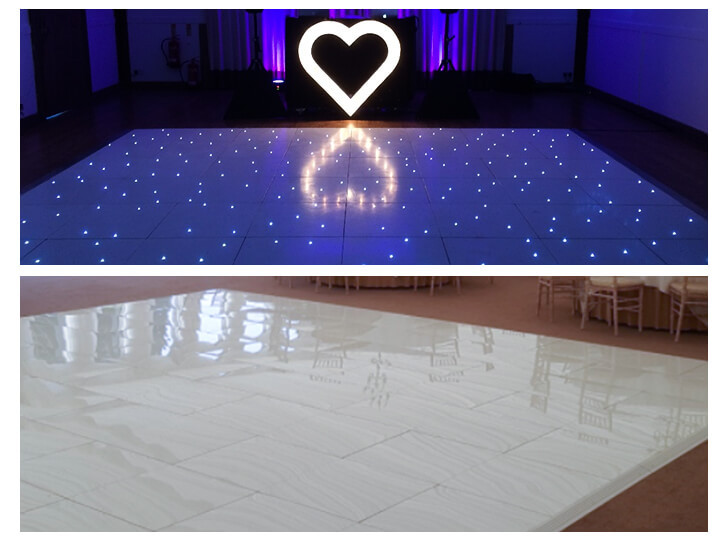 acrylic dance floor
acrylic dance floor
Alt text: An illuminated acrylic dance floor showcasing vibrant LED lighting patterns, perfect for creating an energetic atmosphere at events.
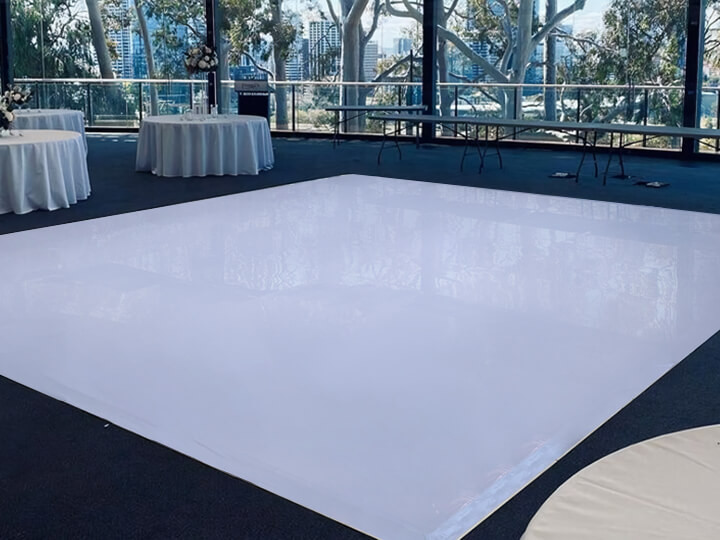 vinyl dance floor
vinyl dance floor
Alt text: A durable vinyl dance floor suitable for various dance styles, offering excellent grip and ease of maintenance in studio environments.
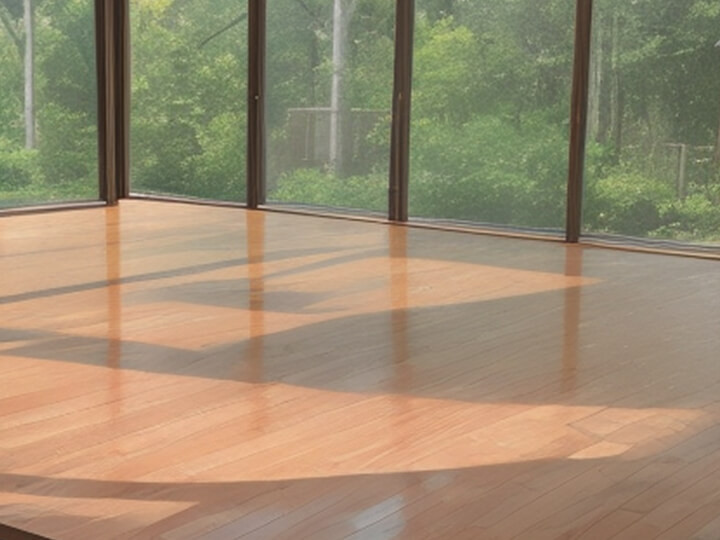 plywood dance floor
plywood dance floor
Alt text: A cost-effective plywood dance floor solution, providing a stable base for dance activities and practices in home or temporary settings.
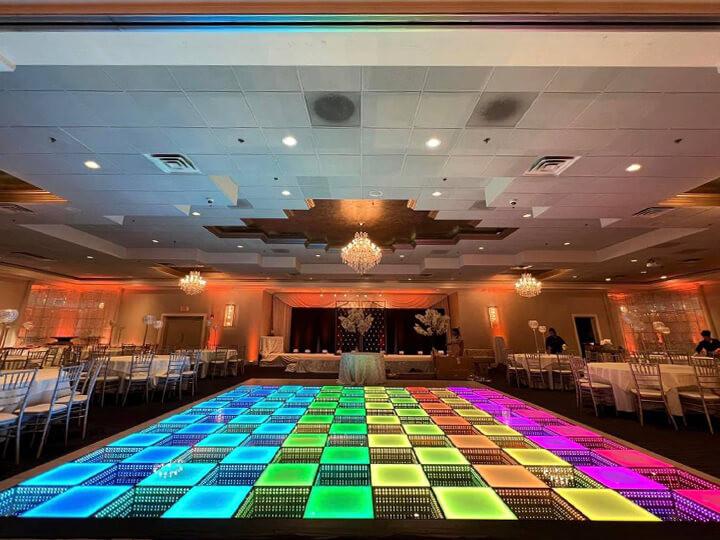 Wedding with frosted and mirror dance floors
Wedding with frosted and mirror dance floors
Alt text: Frosted and mirror dance floors create an elegant, reflective space for wedding receptions, enhancing the romantic ambiance.
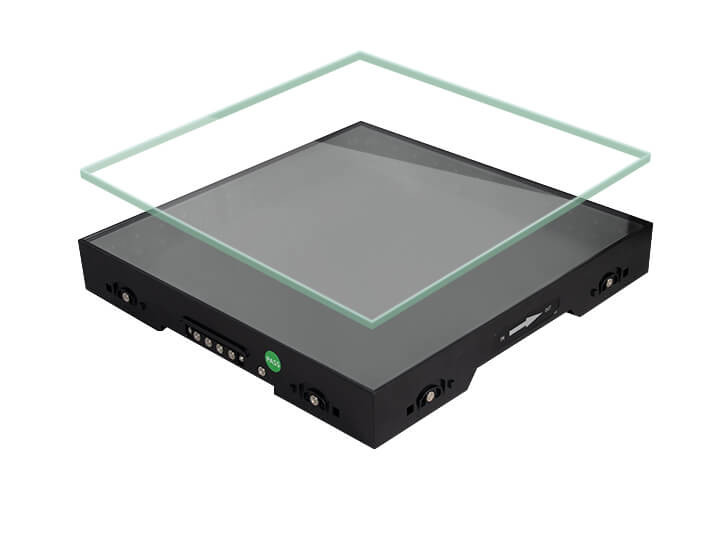 10MM Tempered Glass Panel Magnetic Dance Floor
10MM Tempered Glass Panel Magnetic Dance Floor
Alt text: A durable 10mm tempered glass panel used in a magnetic dance floor, providing a safe and visually stunning surface for dancers.
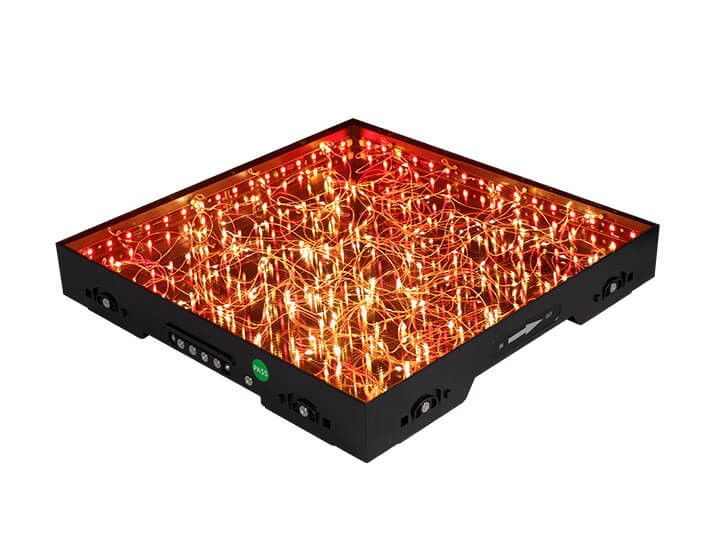 ABS plastic case of magnetic dance floor
ABS plastic case of magnetic dance floor
Alt text: Lightweight ABS plastic case used in the construction of a magnetic dance floor, ensuring durability and easy portability.
